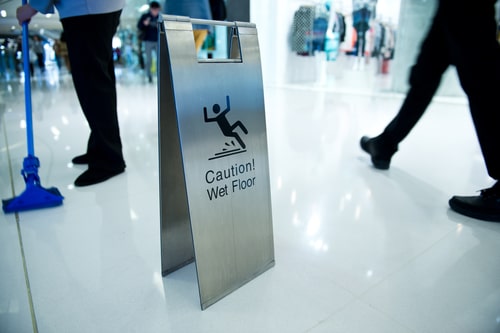
It is estimated that 37 per cent of all workplace injuries throughout the United Kingdom are the direct results of slips, trips and falls. Furthermore, these incidents can cost up to one billion pounds each year in terms of financial remunerations and lost wages (1).
It is therefore ironic that such instances can be prevented to a large extent if the correct policies are adopted by companies involved in the supply chain sector. Let us examine a handful of effective methods which can help to reduce slips, trips and falls.
Employee Awareness
Perhaps the most important (and easiest) method to address slips and falls is to make employees aware of any hazards that may be present.
This can be accomplished through the use of proactive training as well as the presence high-visibility signage. Some situations associated with such risks include:
- Wet floors
- Areas associated with poor visibility
- Stairways, catwalks and elevated platforms
- Locations near dangerous or obtrusive machinery
Workers who are made aware of these and other risks are much more likely to take proactive steps in order to ensure their safety.
Ensuring a Clean Environment
Slips and trips will often occur as a result of substances that should not be present on walking surfaces. Oil, grease, water, and debris are often to blame for work-related injuries. Management should therefore address these and similar situations as soon as they occur.
From the use of industrial-grade floor cleaning equipment to placing warning signs in the appropriate locations, there are a host of options available. The best way to avert an accident is to maintain clean and dry flooring at all times.
Personal Protective Equipment
The use of personal protective equipment (PPE) is another crucial facet to highlight when referring to slips, trips and falls. This is particularly relevant to supply chain management, as workplaces are often hectic and involve a high degree of automation.
Thus, employees must be provided with the proper equipment at all times. Some examples include (but are not limited to):
- Boots with a higher degree of traction.
- Torches and similar accessories intended to illuminate low-light environments.
- Harnesses and lanyards when working at height.
Accountability is also critical, so employees should be encouraged to report any on-site violations. This will help to guarantee that the correct rules are followed at all times.
Cleanhire supplies a wide range of floor cleaning machines intended to be used throughout the commercial and industrial sectors. A host of options are available depending upon the environment in question as well as the type of flooring that needs to be addressed.
Sources:
1. http://www.slipstripsandfalls.org.uk/slip-trip-and-fall-statistics#:~:text=Slip%2C%20trip%20and%20fall%20injuries,a%20slip%2C%20trip%20or%20fa
